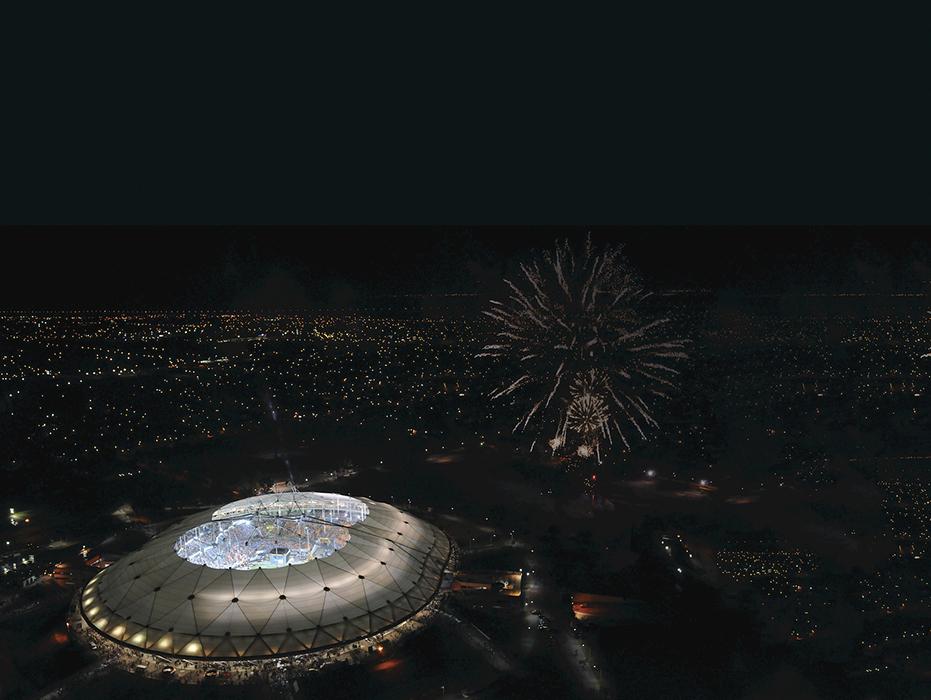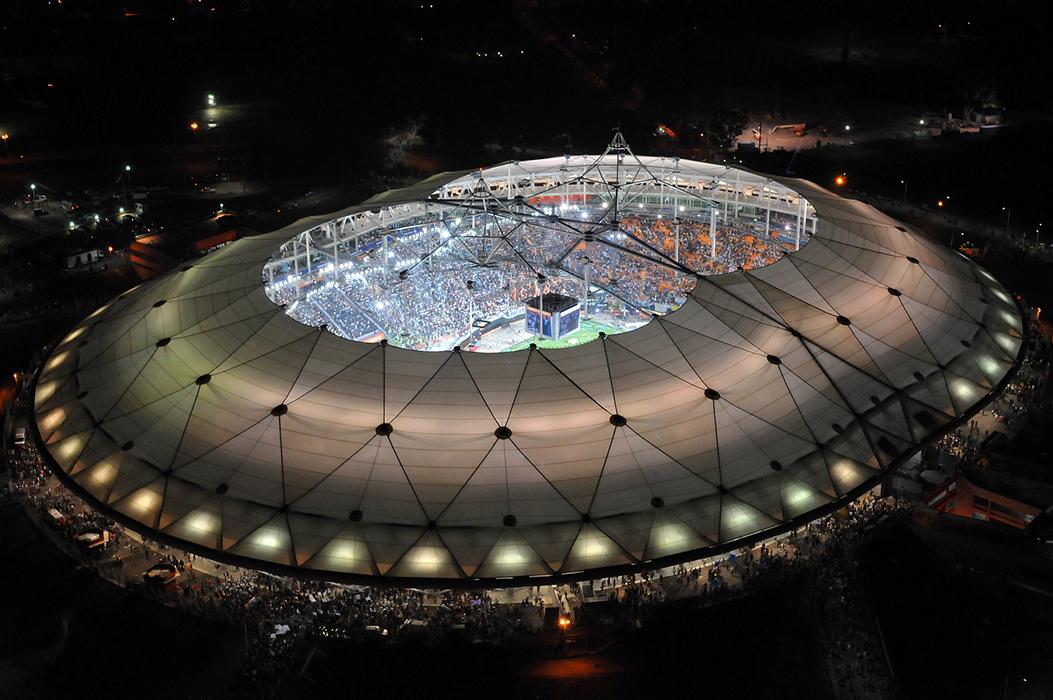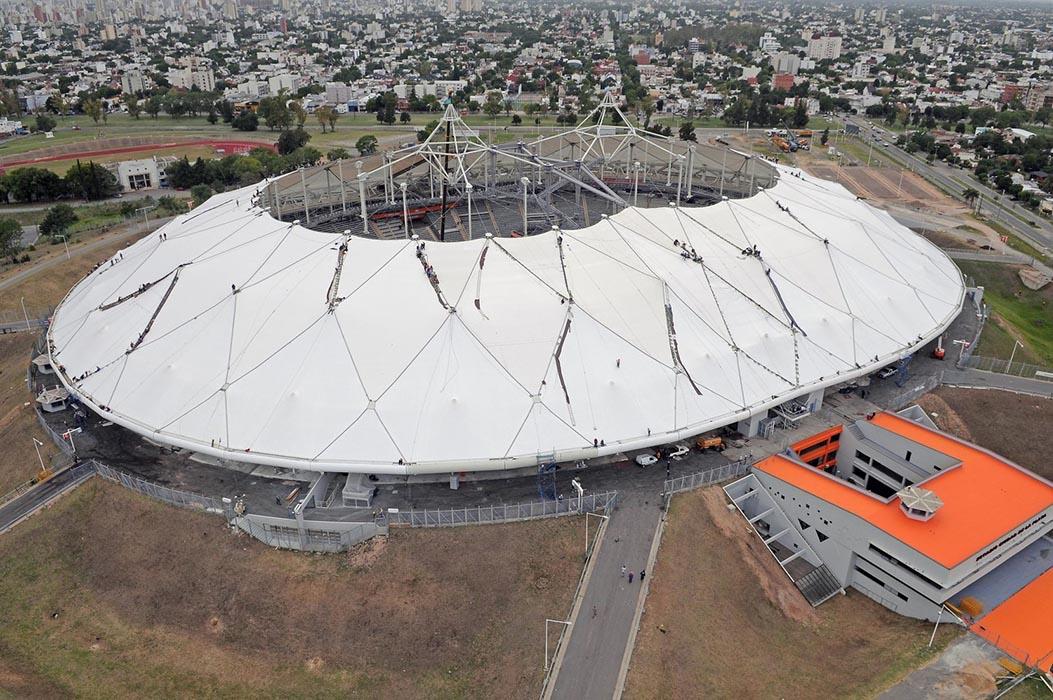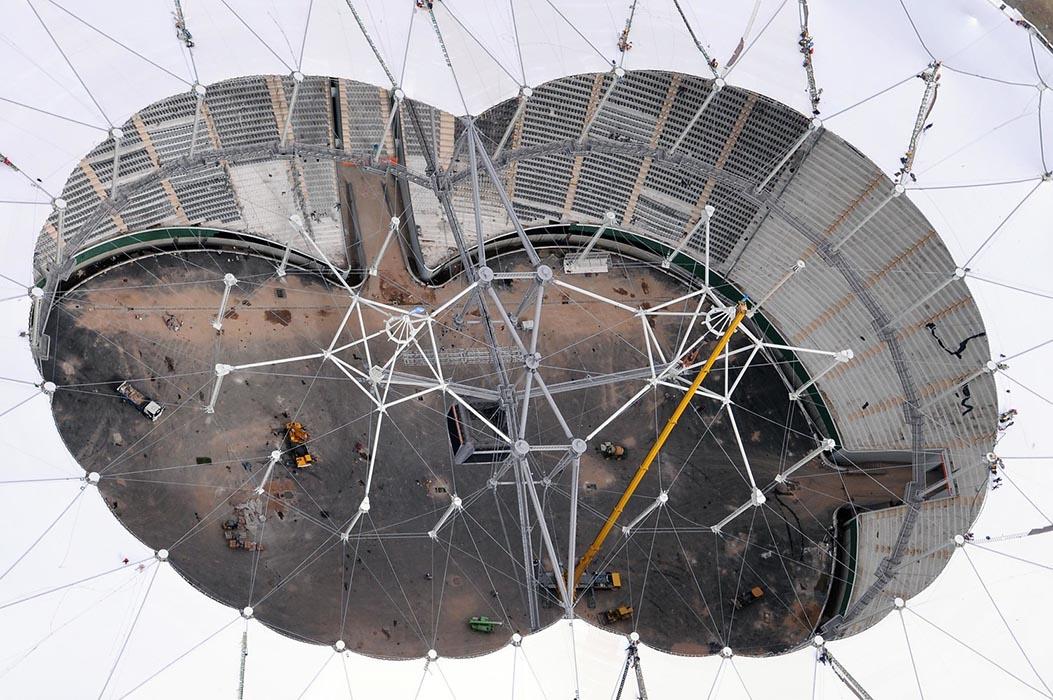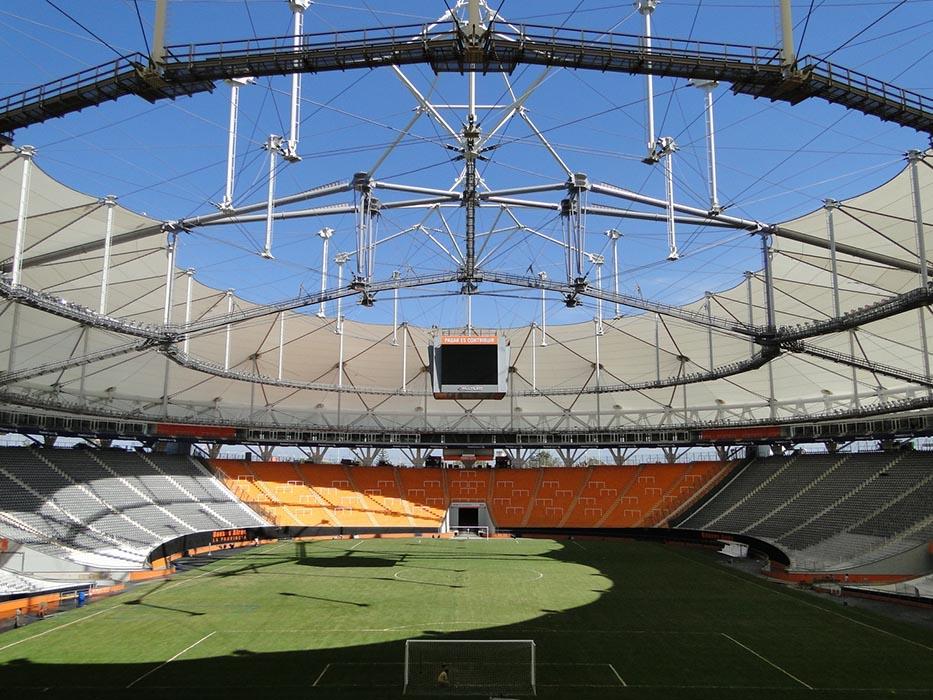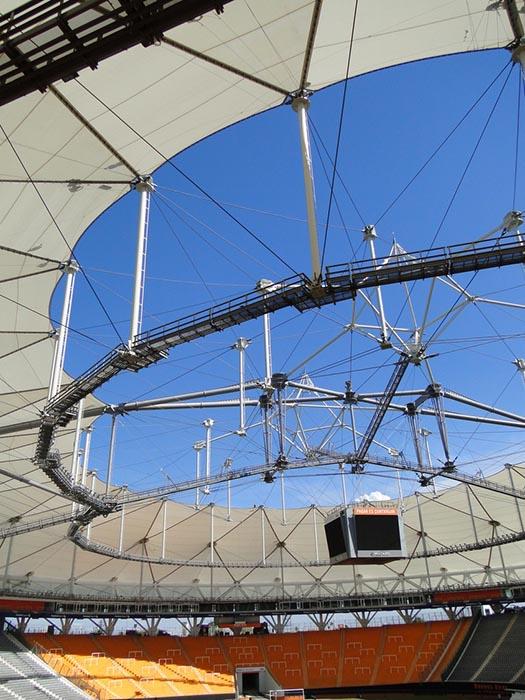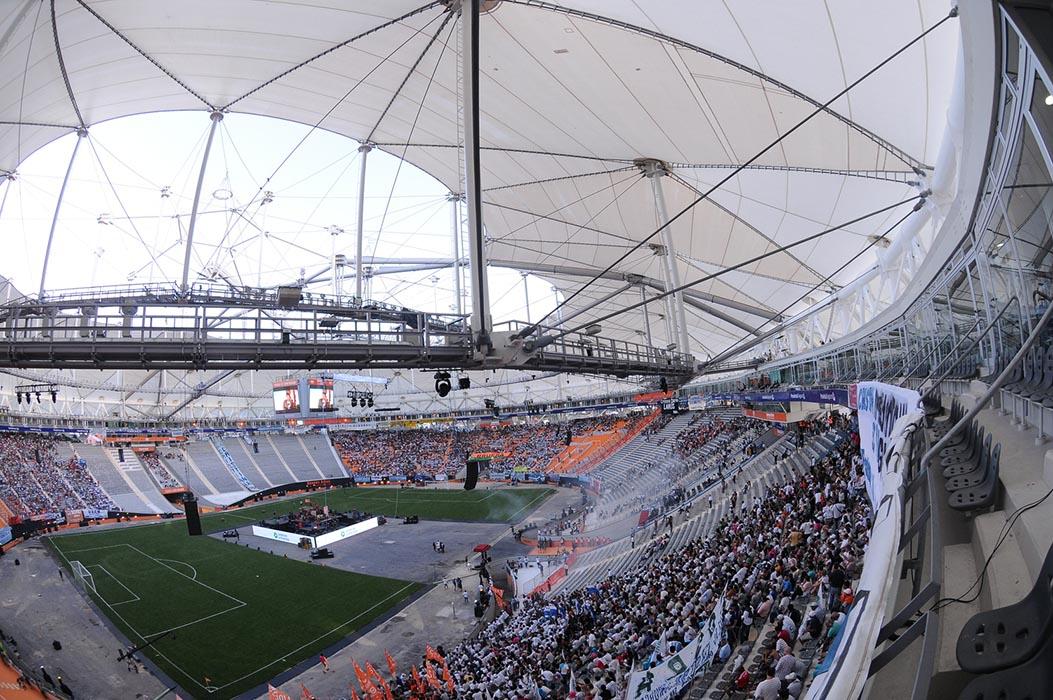La Plata Stadium
Featuring the first fabric roof structure in South America, a one-of-a-kind stadium was conceived as two large overlapping circles culminating in twin peaks.
overview
The first fabric-covered stadium in South America, La Plata Stadium was conceived as two large overlapping circles culminating in the twin peaks of its distinctive domed roof. Nicknamed Estadio Único (One-of-a-kind Stadium), La Plata was designed in the late 1990s by architect Roberto Ferreira, but Argentina’s flagging economy led to a break in construction and it wasn’t officially completed until 2011.
We provided structural design services for the stadium, which is clad in UltraLUX, a PTFE-fiberglass composite with 25% translucency, allowing enough sunlight to penetrate to nourish a natural-grass playing field. The dome’s patented “Twinstar” design is the first-ever adaptation of the Tenstar Dome tensegrity concept to a twin-peak contour, forming a figure-eight-shaped central opening by using tension to resist global distortion. Unlike some other tensile roof systems, La Plata’s does not rely on its fabric cover to provide stability: An arch resists outward thrust across the structure’s pinched-waist centerline.
highlights
- The dome’s unconventional shape inspired the development of a new, complex construction method: Temporary towers were erected to enable the roof rings to be lifted before being expanded to their full circumference. The arch was installed with its center higher than its intended final position and then pulled down into place.
- In cross-section, the stadium presents a low profile. The berm rises from a moat below natural grade toward the seating bowl; the playing field is also below grade. This profile balances the cut and fill on the site to the greatest possible extent.
- The cupolas are actually two overlapping surfaces that provide a weather-protected monitor, permitting free air flow through an opening with a 15-meter diameter in the lower-level roof surface of each of the two peaks. A skylight crowns each peak.


